Address: 280 Burnell Street (Map)
Architect: Unknown
Cost: $60,000
Opened: December 26, 1947 (as Valour Road Curling Club)
The site of the Thistle Curling Club at 280 Burnell Street has long been associated with sports excellence.
From 1926 to 1939 it was a softball diamond called Canada Bread Field. (The ca. 1912 former Canada Bread Bakery is the building immediately to the south. This land was likely used for its stables or grazing back in the horse and wagon delivery days.)
It was home to the Winnipeg Commercial Diamond Ball League. At its peak, the league boasted 17 teams, everything from diaries and bakeries, to retailers and breweries fielded teams. it was said to be the largest such league in the country.
April 16, 1945, Winnipeg Free Press
In 1936 a private sports club called West End Orioles Athletic Association began operating from a pair of boxcars on the site. The Orioles fielded soccer and lacrosse teams in summer, but it was hockey that they became famous for.
In 1939 and 1940 they made a number of improvements to their rinks. Lights were put up allow for evening games and they installed their own water source for flooding the ice.
Through the 1940s the Orioles were a powerhouse, racking up numerous championships. In 1944-45, their best year, of the four teams they entered into local hockey leagues, (Midget, Bantam A, Bantam B and Juveniles), three of them won their provincial championships. The Juveniles, who finished their season with a 20-1-1 record, went on to Moose Jaw in April 1945 and took the Western Canadian Juvenile hockey crown.
Legion's first annual parade. November 7, 1932, Winnipeg Tribune.
In spring 1947 the site was sold to the Valour Road Memorial Legion.
The branch was formed in late 1932. The charter was formally presented by Captain Robert Shankland, V. C., one of Valour Road's Victoria Cross recipients of the First World War.
The branch's first president was W.E.C. Hurlburt. He was a veteran of the First World War, a long-time Eaton's employee and editor of their staff magazine, and a well-known amateur theatre director.
There was no club house for the branch. Instead, they met in an assembly hall inside the old CNIB building at Portage and Sherburn, (now the Addictions Foundation of Manitoba building.)
Membership grew quickly. Just five years after its creation, the Valour Road Memorial Legion was the province's largest branch with more than 500 members. Due to an additional spike in membership immediately following World War II, they needed to find a larger home.
July 12, 1947, Winnipeg Tribune
The branch bought this site from the city in the spring of 1947 and hired architects Pratt and Ross to design a $60,000 hall with an attached recreation centre that would offer curling, skating, volleyball, basketball, and other sports. The funds would be raised by selling $50 bonds to the public.
This left the West End Orioles without a home at the same time the city was developing plans for a city-wide network of privately run, but publicly funded, community clubs. The city offered Orioles another piece of land further north on Burnell, a playground area at St. Matthews, if they agreed to become one of these clubs. Orioles eventually took them up on the offer and the Legion scaled back their plans for a full recreation centre.
Construction finally got underway in June 1948. The building included the Legion hall, five sheet curling rink and a banquet room for up to 350 people. The retention of the curling rink no doubt had to do with the fact that the branch had a long tradition of curling teams that played out of the Caledonian Club on Sherbrook Street.
The Legion branch was opened on December 15, 1948 by Lieutenant Governor R. F. McWilliams and C. Rhodes Smith, Minister of Education.
The Valour Road Curling Club opened on Boxing Day by its president Earl Ramsay with an afternoon of friendly games and entertainment. On March 5, 1949 they held their first bonspiel.
Over the decades, Valour Road teams have made their mark on Manitoba’s curling scene.
They won the Provincial Men’s championship three times: 1983 (Lloyd Gunnlaugson); 2002 (Mark Lukowich); and 2005 (Randy Dutiaume). In 1990 Janet Harvey won the Provincial Women’s championship. Men’s Junior championships were won by Lyal Hudson (1989 and 1990) and James Kirkness (1991). The Women’s Junior title went to Ainsley Gunnlaugson in 2000.
By the 2000s, the Legion branch’s membership had dropped off significantly and they were having difficulty maintaining the club. In 2005 they reached a lease agreement with, and eventually sold the building to, Arnold Asham and it became known as the Asham Curling Club.
On June 10, 2006 the Thistle Curling Club on Minto Street burned to the ground. The following year Asham agreed to sell his building to them. Soon after, members of the Valour Road Curling Club voted to dissolve and join the Thistle.
The Thistle Curling Club is the second oldest curling club in the city after the Granite. It was formed on November 10, 1887 after a dispute over rental rates charged by the Granite rink when they were relocating to new premises in 1888.
About 100 members chose to stay behind with the Thistle and remained at the old rink at Alexander Avenue at Market Street. The following year they rented the Grand Roller Rink at the corner of Princess Street and Pacific Avenue.
June 8, 1912, Winnipeg Tribune
In 1911 the club purchased a 100 foot x 180 foot site on the south side of MacDonald Street between Argyle and Maple Avenues and began fundraising for a new building. They hired architect W. J. Ireland to design the seven sheet rink that was notable for being the first to separate spectators from the rink area and leaving space for advertising on its walls. The above image is the architect's proposal. I can't find a photo of the actual building, so it is unclear if the building ended up looking this grand.
During this time one of its most famous members was Frank Cassidy, considered one of the province's greatest curlers from 1910 to 1920. During that time, he won six grand aggregate championships and the Dingwall Trophy for the best MCA Bonspiel record in 1910 and 1920. In 2001 he was posthumously inducted into the Manitoba Curling Hall of Fame.
November 11, 1918, Winnipeg Tribune
In 1917 the Assiniboine and the Civic both lost the leases on their space. The plan was to have all three clubs curl from the Thistle club on McDonald Avenue, but the club's executive, heavily in debt, decided to lease, and eventually sold, the building to a furniture storage company.
This left all three clubs scrambling to find a home. The Ampitheatre, the city's main arena, cost too much to rent but the old Auditorium Rink on Garry Street at York Avenue was available. It normally hosted hockey games during the winter but the number of hockey teams and leagues had also thinned out due to the war.
The building was modified so that nine sheets of ice could be squeezed in and for two seasons the three clubs called it home. In 1920 they played out of the Civic Curling Club's new premises.
June 19, 2006, B Minkevich, Winnipeg Free Press
In January 1921 the Thistle board announced that they bought property on Minto Street, near Minto Armoury, and hired James Chisholm and Son to design a new, five sheet rink. On December 15, 1921 Mayor Parnell threw the ceremonial first rock to open the facility.
At around 4:00 am on June 10, 2006, a 21 year-old arsonist set fire to the building. The building was insured but for nowhere near its replacement cost. The executive ruled out rebuilding, leaving the club's 125 players without a home.
Asham extended the invitation to Thistle players to come play at his club, which led to the sale.
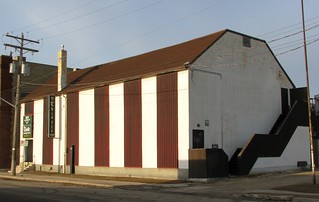



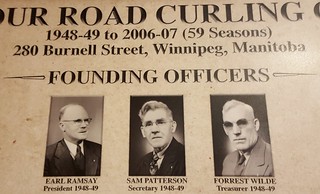
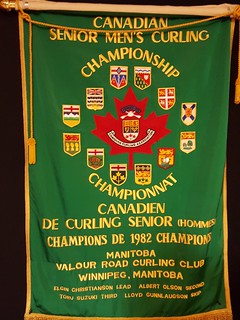
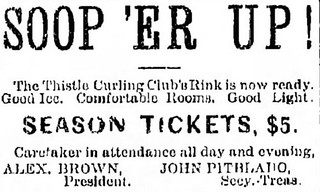

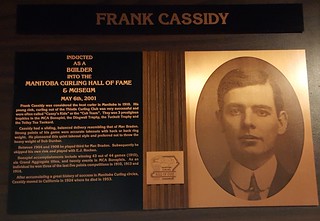


So much history in our neighborhood!
ReplyDelete